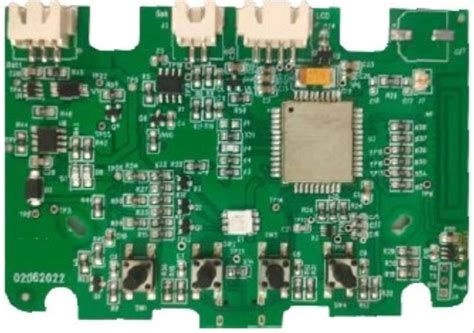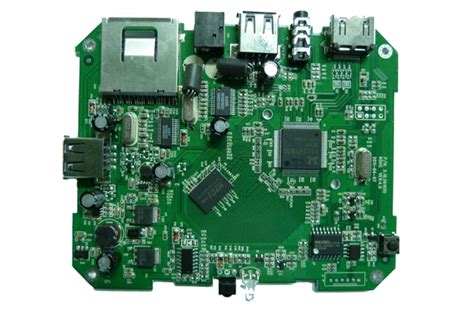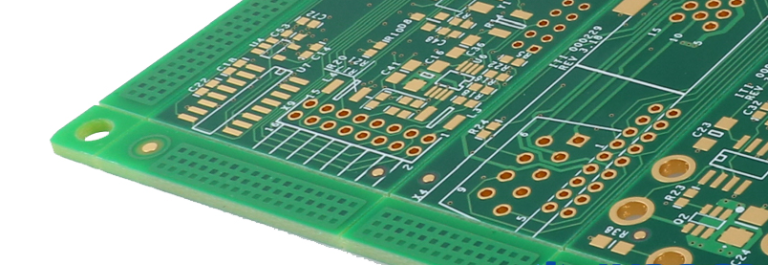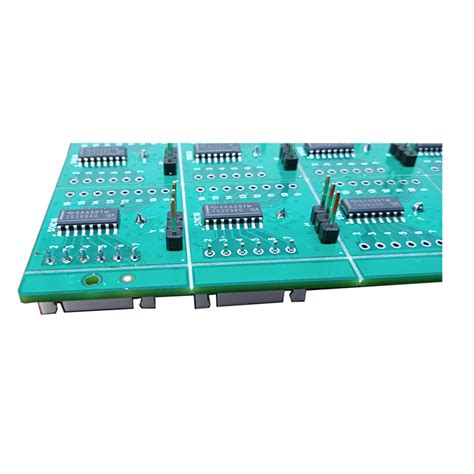Custom circuit board maker
Benefits Of Using A Custom Circuit Board Maker For Your Electronics Projects
In the rapidly evolving world of electronics, the demand for customized solutions has never been greater. As technology continues to advance, the need for tailored electronic components becomes increasingly crucial. One such component that plays a pivotal role in the functionality and efficiency of electronic devices is the circuit board. Opting for a custom circuit board maker can offer numerous advantages for your electronics projects, ensuring that your designs are not only innovative but also highly efficient and reliable.
To begin with, custom circuit board makers provide the flexibility to design circuit boards that are specifically tailored to meet the unique requirements of your project.
Unlike off-the-shelf circuit boards, which may come with limitations in terms of size, shape, and functionality, custom circuit boards can be designed to fit the exact specifications of your device. This level of customization allows for greater creativity and innovation, enabling designers to push the boundaries of what is possible in electronic design.
Moreover, working with a custom circuit board maker can significantly enhance the performance of your electronic devices.
By designing a circuit board that is optimized for your specific application, you can ensure that the components are arranged in the most efficient manner possible. This can lead to improved signal integrity, reduced electromagnetic interference, and enhanced thermal management, all of which contribute to the overall performance and reliability of the device. In addition, custom circuit boards can be designed to accommodate the latest technologies and components, ensuring that your project remains at the cutting edge of innovation.
Another significant benefit of using a custom circuit board maker is the potential for cost savings.
While it may seem counterintuitive, investing in a custom solution can often be more cost-effective in the long run. By designing a circuit board that is perfectly suited to your needs, you can eliminate unnecessary components and reduce material waste. This not only lowers production costs but also minimizes the risk of errors and rework, which can be costly and time-consuming. Furthermore, custom circuit boards can be designed for ease of assembly, reducing labor costs and speeding up the manufacturing process.
In addition to cost savings, custom circuit board makers offer the advantage of scalability.
As your project grows and evolves, you may find that your initial design needs to be modified or expanded. Custom circuit board makers can easily accommodate these changes, allowing you to scale your design without the need for a complete redesign. This flexibility is particularly valuable in industries where technology is rapidly advancing, and the ability to adapt quickly is essential for maintaining a competitive edge.
Finally, partnering with a custom circuit board maker provides access to expert knowledge and support throughout the design and manufacturing process.
These professionals have extensive experience in circuit board design and can offer valuable insights and recommendations to optimize your project. From initial concept to final production, a custom circuit board maker can guide you through each step, ensuring that your design is not only functional but also manufacturable and cost-effective.
In conclusion, the benefits of using a custom circuit board maker for your electronics projects are manifold.
From enhanced design flexibility and improved performance to cost savings and scalability, custom circuit boards offer a tailored solution that can elevate your project to new heights. By leveraging the expertise and capabilities of a custom circuit board maker, you can ensure that your electronic devices are not only innovative but also efficient, reliable, and ready to meet the demands of the modern world.

How To Choose The Right Custom Circuit Board Maker For Your Needs
Selecting the right custom circuit board maker is a critical decision that can significantly impact the success of your electronic projects. With the increasing complexity and specificity of electronic devices, the demand for custom circuit boards has surged, making it essential to choose a manufacturer that aligns with your technical requirements and business objectives.
To begin with, it is crucial to assess the technical capabilities of potential circuit board makers.
This involves evaluating their expertise in handling various types of circuit boards, such as single-sided, double-sided, or multi-layered boards. Additionally, consider their proficiency in working with different materials and technologies, such as flexible or rigid-flex boards, which can be pivotal depending on your project’s needs.
Furthermore, the quality of the circuit boards produced is of paramount importance.
It is advisable to inquire about the manufacturer’s quality assurance processes and certifications, such as ISO 9001 or IPC standards, which indicate a commitment to maintaining high-quality production standards. Requesting samples or prototypes can also provide insight into the quality and reliability of their products.
Equally important is the manufacturer’s ability to meet your specific design requirements.
This includes their capacity to offer design support and customization options, which can be invaluable if you require unique specifications or modifications. A manufacturer with a robust design team can assist in optimizing your designs for manufacturability, potentially reducing costs and production time.
In addition to technical capabilities and quality, the cost of production is a significant factor to consider.
While it may be tempting to opt for the lowest price, it is essential to balance cost with quality and reliability. A thorough cost analysis should include not only the initial production costs but also potential long-term savings from reduced defects and increased product lifespan. Moreover, consider the manufacturer’s lead times and production capacity. Timely delivery is crucial, especially if you are working within tight deadlines or require large volumes. A manufacturer with scalable production capabilities can accommodate your growth and ensure that your supply chain remains uninterrupted.
Another critical aspect to consider is the level of customer service and communication provided by the manufacturer.
Effective communication is vital for addressing any issues that may arise during the production process and for ensuring that your requirements are fully understood and met. A manufacturer that offers dedicated support and maintains open lines of communication can significantly enhance the overall experience and outcome of your project. Additionally, it is beneficial to research the manufacturer’s reputation within the industry. This can be achieved by seeking testimonials from previous clients or reviewing case studies of past projects. A manufacturer with a strong track record of successful collaborations and satisfied customers is more likely to deliver a positive experience.
Finally, consider the geographical location of the manufacturer.
While local manufacturers may offer advantages such as easier communication and faster shipping times, international manufacturers might provide cost benefits or access to advanced technologies. Weighing these factors in relation to your specific needs and priorities will help you make an informed decision. In conclusion, choosing the right custom circuit board maker involves a comprehensive evaluation of their technical capabilities, quality assurance, cost, production capacity, customer service, reputation, and location. By carefully considering these factors, you can select a manufacturer that not only meets your current needs but also supports your future growth and innovation.
Innovations In Custom Circuit Board Manufacturing: What To Expect In The Future
The field of custom circuit board manufacturing has witnessed significant advancements over the past few decades, driven by the relentless pursuit of innovation and efficiency. As technology continues to evolve, the future of custom circuit board manufacturing promises even more groundbreaking developments.
One of the most notable trends is the increasing integration of artificial intelligence and machine learning into the design and production processes.
These technologies enable manufacturers to optimize circuit layouts, predict potential design flaws, and enhance overall production efficiency. By leveraging AI, manufacturers can reduce the time and cost associated with prototyping, thereby accelerating the development cycle and bringing products to market more swiftly.
In addition to AI, the rise of additive manufacturing, commonly known as 3D printing, is poised to revolutionize the production of custom circuit boards.
This technology allows for the creation of complex, multi-layered circuit boards with unprecedented precision and customization. Unlike traditional manufacturing methods, which often involve subtractive processes that can be wasteful, 3D printing builds components layer by layer, minimizing material waste and enabling more sustainable production practices. As 3D printing technology continues to advance, it is expected to become a staple in the custom circuit board manufacturing industry, offering unparalleled flexibility and efficiency.
Moreover, the demand for miniaturization in electronic devices is pushing the boundaries of circuit board design.
As consumers and industries alike seek smaller, more powerful devices, manufacturers are challenged to create circuit boards that are not only compact but also capable of supporting increased functionality. This has led to the development of advanced materials and techniques, such as flexible and stretchable circuit boards, which can be integrated into a wide range of applications, from wearable technology to medical devices. These innovations are not only expanding the possibilities for circuit board design but also opening new markets and opportunities for manufacturers.
Furthermore, the growing emphasis on sustainability and environmental responsibility is influencing the future of custom circuit board manufacturing.
Manufacturers are increasingly adopting eco-friendly materials and processes to reduce their environmental footprint. This includes the use of biodegradable substrates, lead-free soldering techniques, and energy-efficient production methods. As regulatory pressures and consumer awareness around environmental issues continue to rise, the industry is likely to see a greater shift towards sustainable practices, which will not only benefit the planet but also enhance the reputation and competitiveness of manufacturers.
In parallel, the globalization of supply chains and the increasing complexity of electronic products are driving the need for more robust quality control and testing procedures.
Advanced testing technologies, such as automated optical inspection and X-ray inspection, are becoming integral to the manufacturing process, ensuring that circuit boards meet the highest standards of quality and reliability. These technologies allow for the early detection of defects and inconsistencies, reducing the risk of costly recalls and enhancing customer satisfaction.
In conclusion, the future of custom circuit board manufacturing is set to be shaped by a confluence of technological advancements, market demands, and environmental considerations. As AI, 3D printing, miniaturization, sustainability, and quality control continue to evolve, manufacturers will be well-positioned to meet the challenges and opportunities of the future.
By embracing these innovations, the industry can look forward to a future characterized by greater efficiency, customization, and environmental stewardship, ultimately leading to the creation of more advanced and reliable electronic products.

Cost-Effective Strategies For Designing And Ordering Custom Circuit Boards
Designing and ordering custom circuit boards can be a complex and costly endeavor, yet with strategic planning and informed decision-making, it is possible to achieve cost-effectiveness without compromising quality. The process begins with a clear understanding of the project requirements, which involves defining the specifications and functionalities that the circuit board must fulfill. By establishing these parameters early on, designers can avoid unnecessary revisions and ensure that the final product aligns with the intended purpose.
One of the most effective strategies for reducing costs is to engage in thorough research and planning during the initial design phase.
This involves selecting the appropriate materials and components that meet the project’s needs while also considering their availability and cost. By opting for standard components rather than custom or rare parts, designers can significantly reduce expenses. Additionally, leveraging design software that offers simulation capabilities can help identify potential issues before the physical prototype stage, thereby minimizing costly iterations.
Transitioning from design to production, it is crucial to choose a reliable manufacturer with a proven track record in producing high-quality circuit boards.
Partnering with a manufacturer that offers competitive pricing and flexible production options can lead to substantial savings. It is advisable to request quotes from multiple manufacturers to compare costs and services, ensuring that the chosen partner provides the best value for money. Furthermore, establishing a long-term relationship with a manufacturer can lead to volume discounts and priority service, which are beneficial for future projects.
Another cost-effective approach is to optimize the design for manufacturability.
This involves simplifying the circuit board layout to reduce complexity and minimize the number of layers, which can lower production costs. Designers should also consider panelization, a technique that allows multiple boards to be produced simultaneously on a single panel, thereby maximizing material usage and reducing waste. By collaborating closely with the manufacturer during the design process, designers can receive valuable feedback on how to enhance manufacturability and cost efficiency.
In addition to these strategies, it is important to consider the logistics of ordering and shipping.
Ordering in bulk can lead to significant cost reductions, as manufacturers often offer discounts for larger quantities. However, it is essential to balance this with the risk of overproduction, which can lead to excess inventory and increased storage costs. To mitigate this risk, designers can adopt a just-in-time ordering approach, which aligns production schedules with demand forecasts to minimize inventory levels.
Finally, maintaining open communication with all stakeholders throughout the design and production process is vital for ensuring cost-effectiveness.
Regular updates and feedback loops can help identify potential issues early on, allowing for timely adjustments that prevent costly delays or rework. By fostering a collaborative environment, designers, manufacturers, and clients can work together to achieve a successful outcome that meets both budgetary constraints and technical requirements.
In conclusion, designing and ordering custom circuit boards in a cost-effective manner requires a combination of strategic planning, informed decision-making, and collaborative partnerships.
By focusing on optimizing design, selecting the right materials and components, and choosing a reliable manufacturing partner, it is possible to produce high-quality circuit boards that meet project goals while staying within budget. Through careful consideration of each step in the process, designers can navigate the complexities of custom circuit board production with confidence and efficiency.







